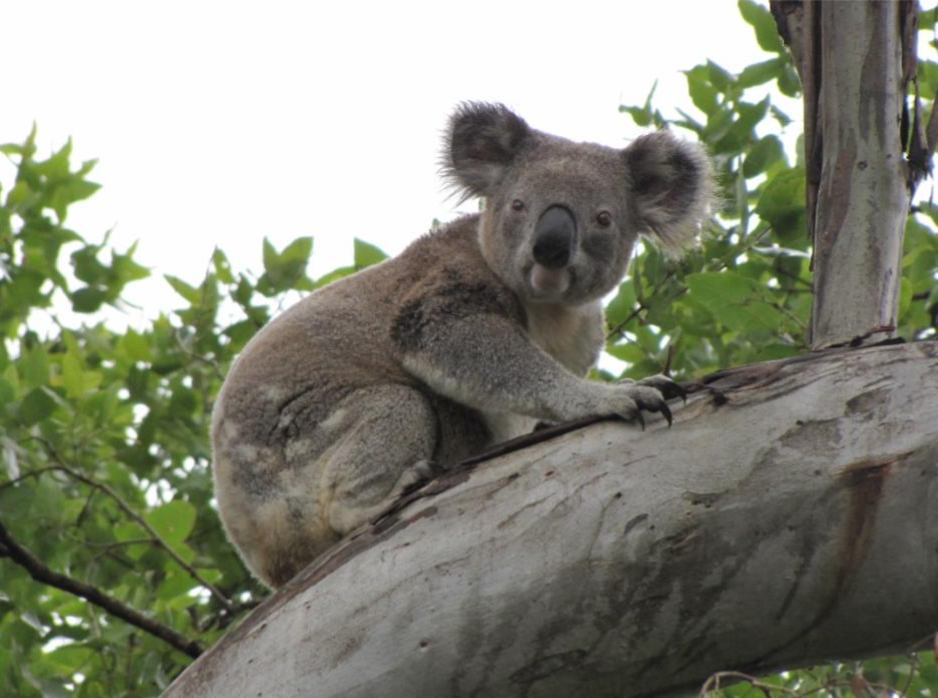
This is a call out for us all to get behind our beloved koalas, and do what we can to help reduce their threats, and increase awareness of their plight. There are numerous ways we can help them.
It’s mating season, so koalas are most actively moving across the landscape at this time of year, and therefore the number of car strikes also increase. Please drive with awareness and caution, for all wildlife, but keep a keen eye out for koalas on roadsides, especially at night.
If you see a koala, it is very important to stop and try to assess whether it is healthy or not.
The main signs to look for is whether their bottoms are clean, and their eyes clear. Sick koalas may have red, swollen, crusty eyes, they may be losing fur anywhere on their body, have an unpleasant smell and may have discharges from their eyes and/or bottoms. They may be slow to respond, sitting low to or on the ground, and they might stay in the same tree for more than a few days. They may appear disorientated, with an abnormal gate, or walking in circles.
If you see a koala behaving or looking like this, it is very important to call the 24 hour koala hotline on 02 66221233.
If the koala appears healthy and normal, but is on or near a road, it is important to call the hotline so that Friends of the Koala can put signs up to alert other drivers to be cautious.
If you see a koala away from a road, and they appear healthy, you can record the sighting via the Friends of the Koala website.
Recording sightings helps inform where koalas are in our landscape. Koalas have individual characteristics, so if you can take a photo and upload it, Friends of the Koala may be able to determine what individual it is, which gives an idea of where they are moving around our landscape. A photo also helps them determine whether the koala is healthy, or not.
There are other ways of knowing whether koalas are present, including hearing their calls (male koalas at this time of year are particularly noisy, as they vie for a mate), scratchings on koala food trees, and finding scats, if you look under a koala food tree.
How to look for these signs, and where to record that data, along with ways to improve their habitat, will be covered in future articles.



